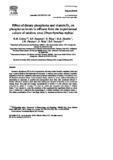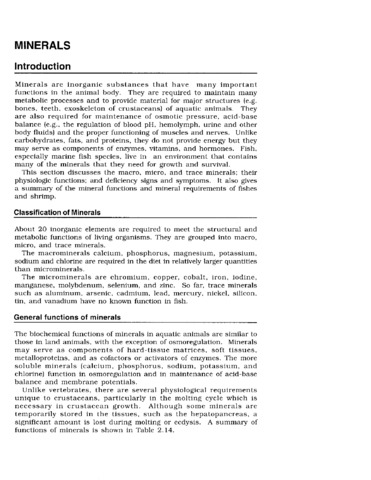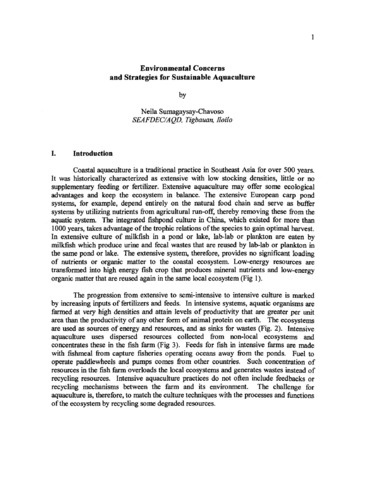Effect of dietary phosphorus and vitamin D3 on phosphorus levels in effluent from the experimental culture of rainbow trout (Oncorhynchus mykiss)
- Global styles
- MLA
- Vancouver
- Elsevier - Harvard
- APA
- Help

View/
Date
2001Author
Page views
2,473ASFA keyword
AGROVOC keyword
Metadata
Show full item record
Share
Abstract
Excessive phosphorus (P) levels in aquaculture effluents violate federally mandated limits and pose a serious threat to the freshwater environment. In rainbow trout culture, effluent P probably originates as fecal and metabolic waste product because assimilation of dietary P is relatively low. We therefore decreased dietary P and increased dietary vitamin D3 levels, methods that enhance P assimilation in mammals, in purified and semi-purified trout diets, then monitored effluent P. Soluble effluent P reached a peak right after feeding and returned to baseline levels in between feeding times. The peak and average concentrations of soluble P in the effluent were mainly influenced by dietary P. Average P in fecal dry matter also decreased with dietary P. Neither dietary P nor vitamin D3 under the conditions of the experiment had significant effects on whole body P content but P deposition (as a percentage of P intake) decreased with increased dietary P. The dietary combination of low P and high vitamin D3 decreased soluble and fecal P levels in the effluent indicating a strategy whereby effluent P concentrations can be reduced by regulation of P metabolism.
Suggested Citation
Coloso, R. M., Basantes, S. P., King, K., Hendrix, M. A., Fletcher, J. W., Weis, P., & Ferraris, R. P. (2001). Effect of dietary phosphorus and vitamin D3 on phosphorus levels in effluent from the experimental culture of rainbow trout (Oncorhynchus mykiss). Aquaculture , 202(1-2), 145-161. https://doi.org/10.1016/S0044-8486(01)00572-5
Type
ArticleISSN
0044-8486Collections
- Journal Articles [1258]
Related items
Showing items related by title, author, creator and subject.
-
Growth responses of Spirulina platensis to some physico-chemical factors and the kinetics of phosphorus utilization
Baldia, Susana F.; Fukami, Kimio; Nishijima, Toshitaka; Hata, Yoshihiko (Japanese Society of Fisheries Science, 1995)The growth responses of Spirulina platensis NIES-46, a brackishwater strain originally isolated from Lake Texcoco Mexico, to some physico-chemical factors and nutrients were investigated. The optimum conditions for growth ... -
The essential nutrients: Minerals
Millamena, Oseni M. (Aquaculture Department, Southeast Asian Fisheries Development Center, 2002)This section discusses the macro, micro, and trace minerals; their physiologic functions; and deficiency signs and symptoms. It also gives a summary of the mineral functions and mineral requirements of fishes and shrimp. -
Environmental concerns and strategies for sustainable aquaculture
Sumagaysay-Chavoso, Neila (University of the Philippines Aquaculture Society, Inc, 2001)




